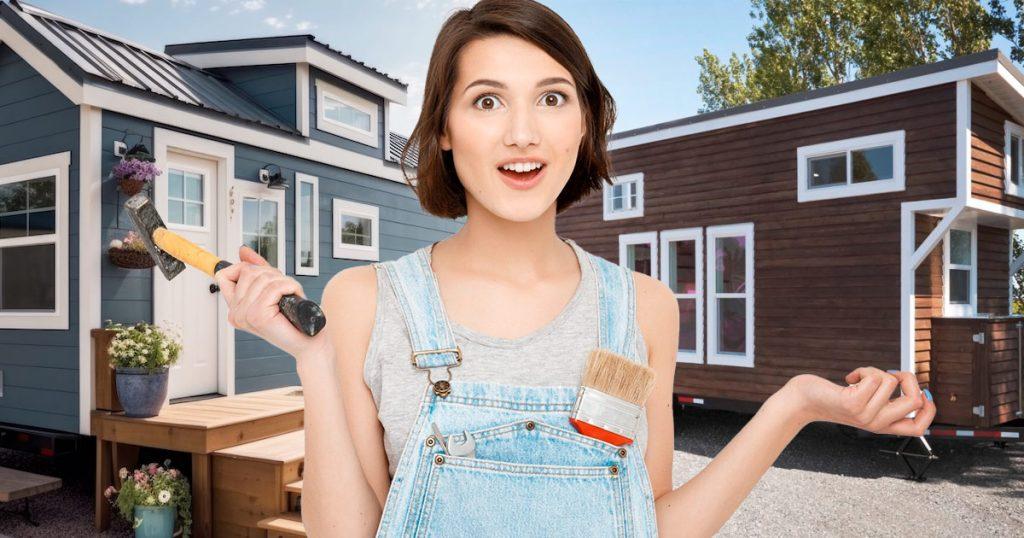Starting the process of creating a tiny house is an exciting but difficult undertaking. The challenge lies not only in creating a space that suits your needs but also in achieving this on a budget. This post explores the skill of creating a tiny house that is both affordable and functional. Let’s explore how to design a tiny home that balances functionality, aesthetics, and affordability.
Why is tiny house design important?
Tiny house design is a profound undertaking that extends beyond the mere optimization of spatial constraints; it is an art form dedicated to curating an environment that seamlessly mirrors and enhances your lifestyle. More than just a quest for efficiency and comfort, a well-designed tiny home aspires to achieve a unique harmony, aligning itself with the fundamental principles of minimalism and simplicity.
Every square foot serves as a canvas where thoughtful design choices come to life, transforming limited space into a personalized haven. The significance lies in the intentional creation of a living space that not only accommodates your needs but transcends them, elevating your daily experience to new heights. Amid the constraints of size, a well-designed tiny home becomes a sanctuary, fostering a sense of serenity and tranquility.
The essence of tiny house design is not merely about fitting into a compact space; it is about making deliberate choices that contribute to the overall aesthetic, functionality, and flow of the home. It is an opportunity to curate an environment that resonates with your values, preferences, and the way you envision living. Each design decision, from the layout to the choice of materials, becomes a statement reflecting your unique personality and priorities.
The significance of tiny house design, therefore, lies in its transformative power. It transforms a confined space into a place of comfort, where every element serves a purpose and contributes to a cohesive whole. It transcends the limitations imposed by square footage, proving that thoughtful design can create a sense of expansiveness even in the smallest of homes. In embracing the principles of minimalism and simplicity, tiny house design encourages a mindful approach to living. It inspires a sense of release from excess by encouraging a reevaluation of material belongings and a focus on what matters.
Is it possible to have a good design on a budget?
Dispelling the myth that good design demands a hefty price tag, the world of tiny homes champions creativity and resourcefulness. While a limited budget poses challenges, it ignites innovation. Strategic planning and a discerning eye for affordable solutions empower the realization of a stylish and functional tiny home without financial strain. The essence lies in harnessing ingenuity to find cost-effective alternatives, proving that a well-designed space is not exclusive to the affluent but accessible to those with a budgetary conscience.
Would you need professional help?
Navigating the decision to enlist professional assistance in designing your tiny home involves careful consideration. While architects and designers bring expertise, their services may strain a modest budget. Alternatively, the DIY approach, fueled by online resources and a vibrant community of tiny house enthusiasts, has gained momentum. Balancing professional guidance with hands-on creativity becomes pivotal in achieving a successful, budget-friendly design. The choice hinges on finding the equilibrium that aligns with your vision and financial considerations.
8 Tips for designing a tiny house on a budget
1. Prioritize essential spaces
Initiate the design process by pinpointing the core spaces crucial to your lifestyle. Consider your daily routine and prioritize areas that align with your activities. Whether it’s a dedicated workspace, a functional kitchen, or a cozy sleeping nook, focus on functionality. This strategic prioritization ensures that every square foot serves a purpose, guiding resource allocation and preventing unnecessary expenses.
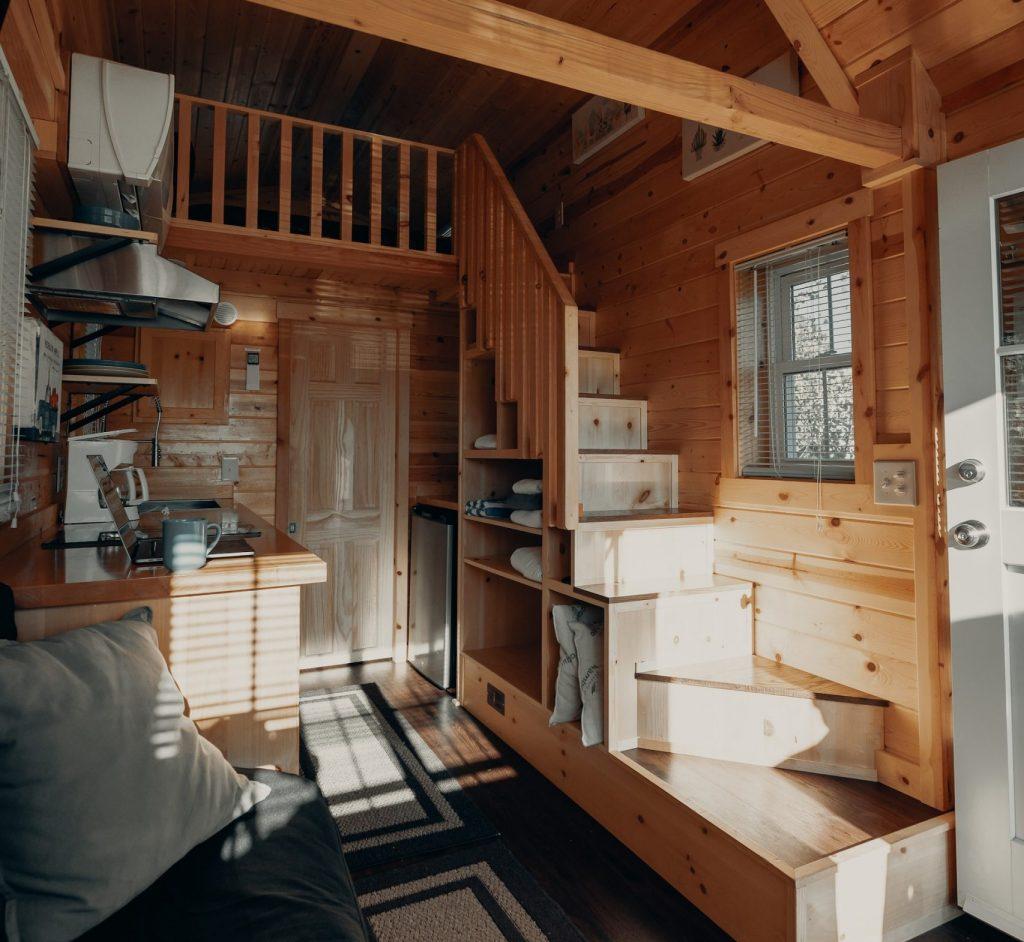
2. Opt for multifunctional furniture
Embrace the versatility of furniture that serves multiple roles. Look for foldable tables, convertible sofas, and storage-integrated furnishings. These space-saving solutions not only enhance functionality but also minimize the need for excess furniture. By aligning seamlessly with a budget-conscious mindset, multifunctional pieces become the cornerstone of an efficient and well-designed tiny home.

3. Explore salvaged and recycled materials
Embark on a sustainable and budget-friendly design journey by delving into salvaged and recycled materials. Investigate options such as reclaimed wood, salvaged windows, and repurposed fixtures. Beyond cost reduction, incorporating these elements contributes to an eco-friendly ethos, turning discarded items into integral components of your tiny home’s character. The beauty lies in the unique stories and history woven into each salvaged piece.
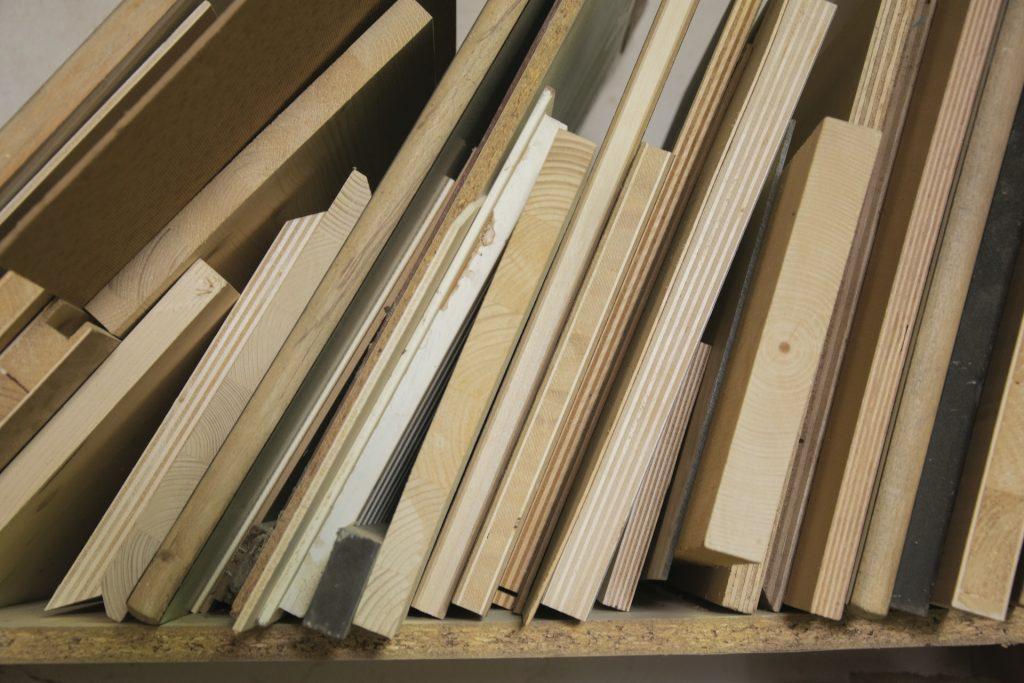
4. Consider a tiny house on wheels
Unleash mobility and financial advantages by opting for a tiny house on wheels. This innovative approach not only allows you to navigate certain zoning regulations but also offers the freedom to choose diverse locations. The added benefit of eliminating the need for a traditional foundation significantly alleviates a substantial financial burden, making a movable tiny home an appealing and budget-friendly choice.
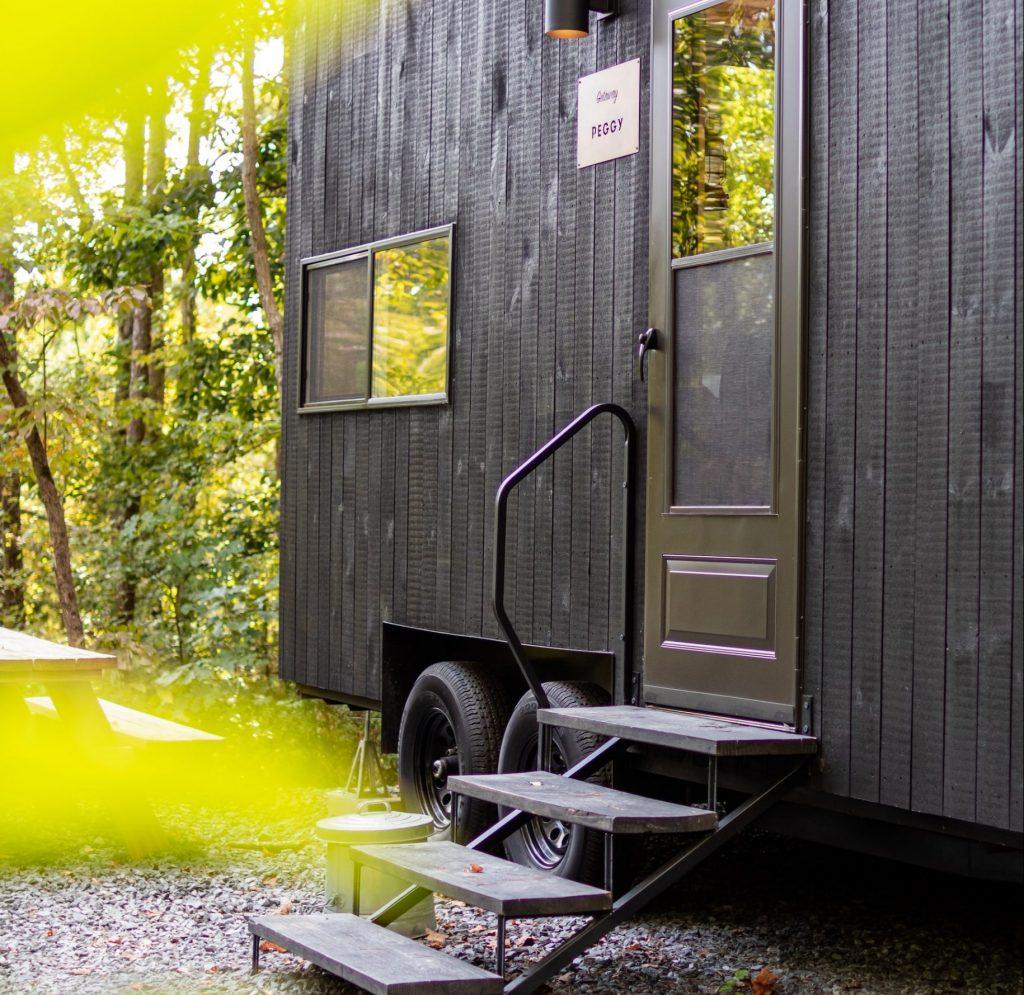
5. DIY interior finishes
Embark on a do-it-yourself journey for interior finishes to infuse a personal touch into your tiny home. Painting, flooring, and small carpentry projects become achievable with guidance from online tutorials. Beyond the cost savings, the DIY approach instills a sense of pride and ownership, creating a living space that reflects your unique style and preferences.
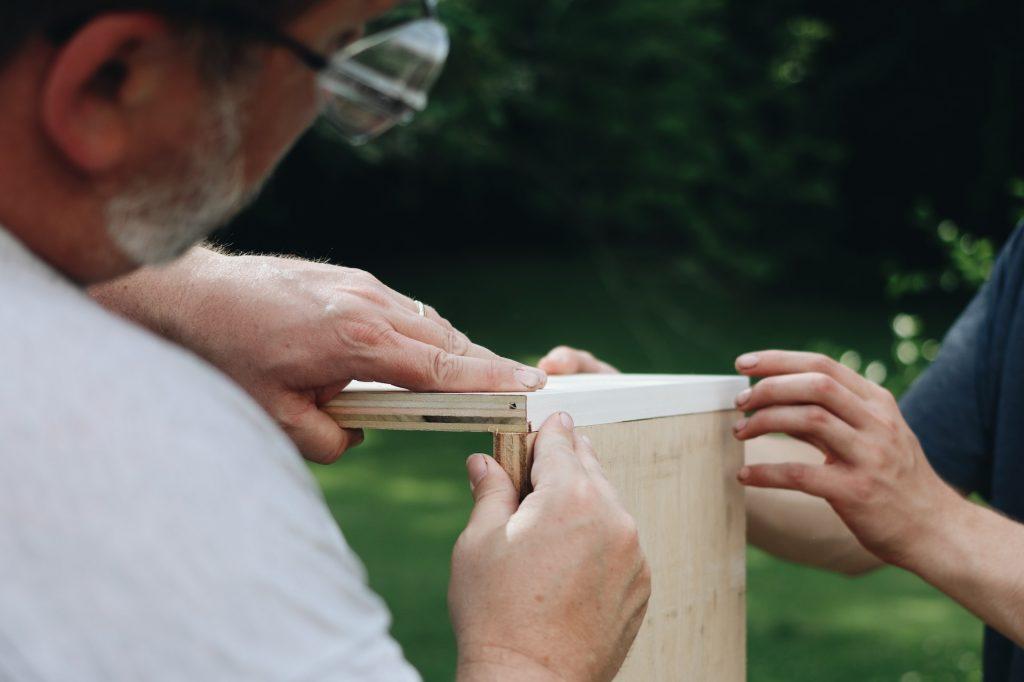
6. Optimize natural light and ventilation
Harness the inherent benefits of nature by prioritizing large windows and strategically placed vents in your tiny home design. Making the most of natural light not only improves the atmosphere but also lessens the need for artificial lighting. A pleasant home reduces the demand for continuous air cooling by implementing strategic ventilation. This dual approach aligns with sustainable principles and results in long-term cost savings.
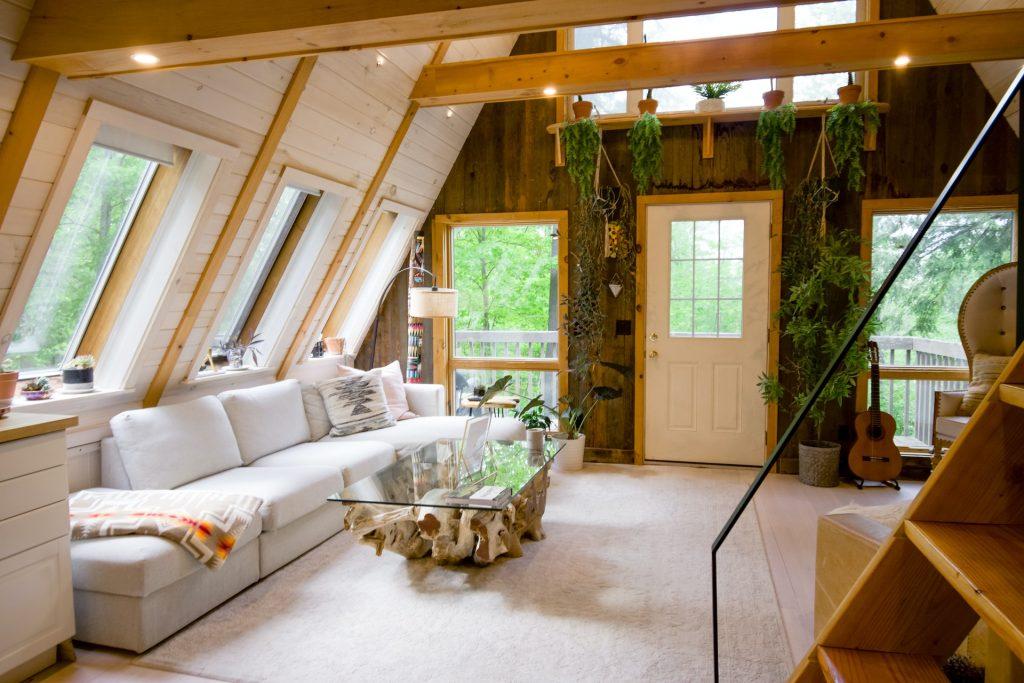
7. Energy-efficient appliances
Make informed investments in energy-efficient appliances to minimize operational costs over time. These appliances are a cost-effective option because of the long-term energy bill reductions, even though the initial upfront cost may be slightly greater. Prioritize selections with ENERGY STAR ratings, ensuring optimal efficiency and sustainability in your tiny home.

8. Creative storage solutions
Unlock the potential of innovative storage solutions tailored to your specific needs. Customize storage to keep your living area tidy, from concealed compartments to wall-mounted shelves and under-bed storage. Creative storage not only prevents clutter but also amplifies the functionality of every nook and cranny, ensuring that every inch contributes to the overall efficiency of your tiny home.
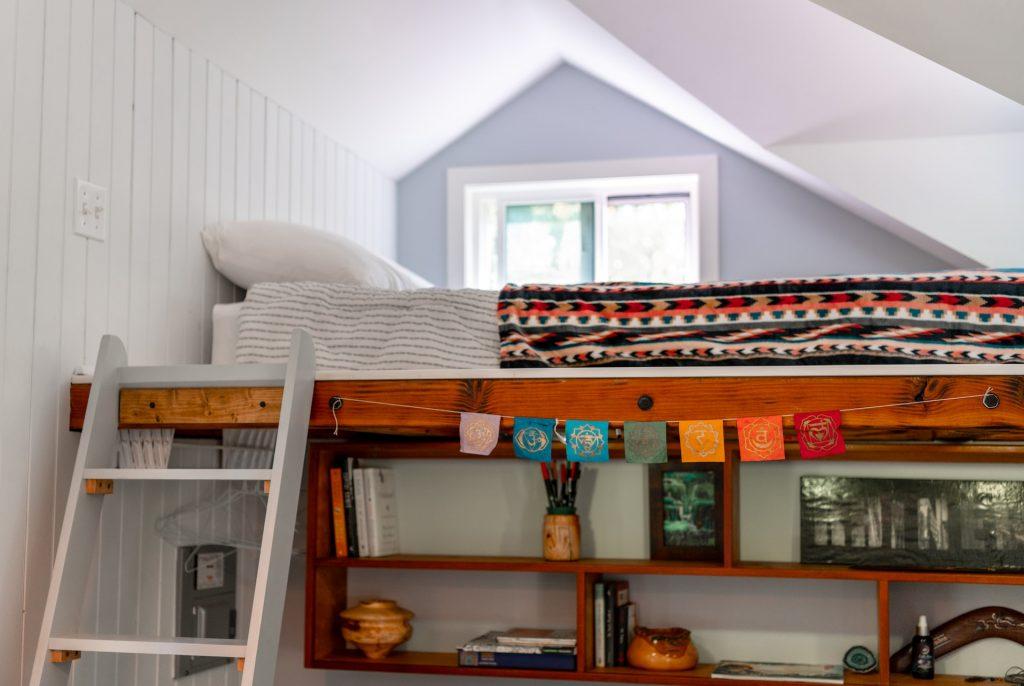
You don’t have to spend a lot for your tiny house
The process of creating a tiny house on a tight budget is an example of ingenuity and resourcefulness. By prioritizing essential spaces, embracing multifunctional furniture, and exploring cost-effective materials, you can craft a tiny home that reflects your style without draining your finances. Whether you choose professional guidance or opt for a DIY adventure, the key is to approach each design decision with a balance of practicality and ingenuity. Remember, you don’t have to spend a lot for your tiny house; instead, invest in thoughtful design choices that make the most of every inch.
